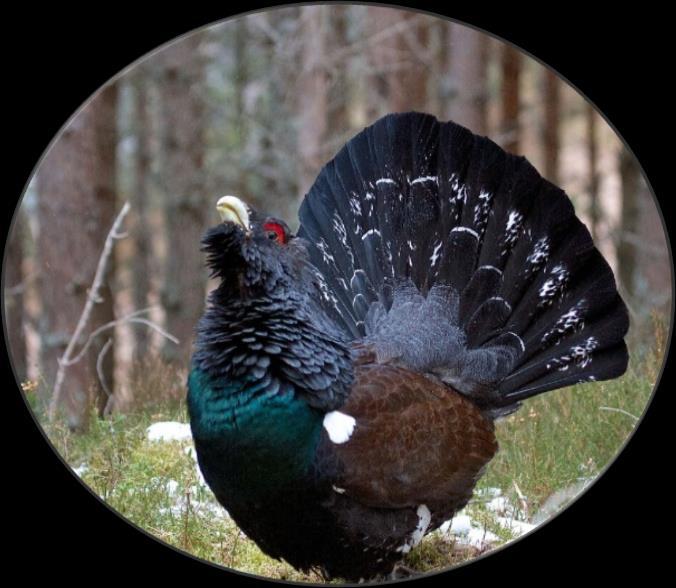




Population Freshwater abstraction
Note: LULUCF: land use, land-use change and forestry.
Sources: IEA (2023), IEA World Energy Statistics and Balances (database); OECD (2023), OECD Environment Statistics (database); OECD (2023), OECD Economic Outlook (database).
Municipal waste generation
Total energy supply
Nitrogen oxides emissions

Note: LULUCF: land use, land-use change and forestry. Dotted lines refer to national projections with existing measures. Dashed lines refer to projections with additional measures.
ESD targets: under the EU Effort Sharing legislation and amended Effort Sharing Regulation (EU 2023/857). LULUCF 2030 target: under the LULUCF Regulation (EU 2023/839).
ETS: emissions under the EU Emissions Trading System. 2022 data are estimates.
Source: MoE (2023), National Inventory Report 2022; EEA (2023), Member States' greenhouse gas (GHG) emission projections, 24 October.

Coal is being phased out Nuclear power is set to increase further
Note: Total energy supply excludes electricity trade and non-renewable waste; 2022: provisional data.
Source: IEA (2023), World Energy Statistics and Balances (database).

PM2.5 average concentrations, OECD European countries, 2021
Source: EEA (2023), Europe’s air quality status. Guideline value recommended by the World Health Organization

Source: OECD (2023), OECD Environment Statistics (database).

Note: Municipal waste: household and similar waste collected by or for municipalities, originating mainly from households and small businesses. Includes bulky waste and separate collection.
Source: OECD (2023), OECD Environment Statistics (database).

Slovakia's Recovery and Resilience Plan allocations
Tagged for climate of which: REPowerEU
Green economy
Gross fiscal costs of energy support measures as % of GDP, 2022-23
2022 2023
Renewable energy and energy infrastructure
Renewable energy and energy infrastructure
Building renovation
Building renovation
Sustainable transport
Sustainable transport
Decarbonisation of industry
Decarbonisation of industry
Adaptation to climate change
Adaptation to climate change
Education
Science, research, innovation
Health
Efficient public administration and digitisation
EUR billion
Note: Right panel: not accounting for the effect of possible accompanying energy-related revenue-increasing measures, such as windfall profit taxes on energy companies.
Source: EC (2023 and 2021), Analysis of the recovery and resilience plan of Slovakia; OECD (2023), OECD Energy Support Measures Tracker.

Slovakia receives large amounts of EU funds, but their absorption is low
Structural funds and Recovery and Resilience Facility grants, OECD EU countries, 2014-20 and 2021-27
Cohesion policy implementation, 2014-20 spending as % of planned amounts
Slovak Republic EU28
Total cohesion policy
Environmental protection and resource efficiency
Low carbon economy
Climate adaptation and risk prevention
Network infrastructure in transport and energy
Note: In left panel, data refer to total allocations (excluding national co-financing) in current prices as a percentage of 2021 GDP. Structural funds: European Regional Development Fund, Cohesion Fund, European Social Fund; 2021-27: including Just Transition Fund; 2014-20: including Youth Employment Initiative. Recovery and Resilience Facility (RRF) grants: including REPowerEU grants.
Source: EC (2023), Cohesion Open Data Platform, period covered up to 30 June 2023; EC (2023), Consolidated Regulation (EU) 2021/241 establishing the Recovery and Resilience Facility, 28 February; EC (2022), RRF: Update of the maximum financial contribution, June.

Revenue from green taxes increased until 2019, driven by road fuel consumption while inflation eroded fuel taxes
Environmentally related tax revenue by tax base, 2010-22
Note: Energy includes revenue from a surcharge on electricity to finance feed-in tariffs for renewables and co-generation and subsidies for electricity generation from domestic coal. The decrease in 2022 reflects the fall in revenue from the surcharge, as high market prices have led to a reduction in support for electricity and combined heat and power producers.
Source: EC (2023), National Tax Lists, 21 April.

habitats
Bogs, mires & fens
Grasslands
Sclerophyllous scrubs
Heath and scrub
Freshwater habitats
Coastal habitats
Dunes habitats
Other invertebrates Vascular plants Non-vascular plants
Amphibians
Note: Report for 2013-18 based primarily on data from KIMS (Complex Information Monitoring System). Sclerophyllous scrubs: Juniperus communis formations on heaths or calcareous grasslands; Coastal habitats: inland salt meadows and pannonic salt steppes and salt marshes; Dune habitats: pannonic inland dunes.
Source: EEA (2021), Conservation status of habitat types and species: datasets from Article 17, Habitats Directive 92/43/EEC reporting.

➢Restoration plan
➢Finance strategy
Note: NBSAP: National Biodiversity Strategy and Action Plan .
Source: Adapted from Černecký et al. 2021, Value of Ecosystems and their Services in Slovakia.
Annual cost of degradation: EUR 20 billion

Terrestrial protected areas by IUCN category of protection, top 15 European countries of the OECD, 2022
Landscapes/seascapes, areas with sustainable use of natural resources, no category (V-VI)
Natural monument, habitat/species management area (III-IV)
Strict nature reserve, wilderness area, national park (I-II)
2030 target
2020 target
Note:2020 Aichi target 11 of the United Nations Convention on Biological Diversity; 2030 target 3 under the under the Kunming-Montreal Global Biodiversity Framework
Source: OECD (2023), OECD Environment Statistics (database).

Slovakia has a high intensity of logging
Intensity of use of forest resources, top 10 OECD countries, 2022
Czechia
Note: Data refer to the ratio of fellings to productive capacity (gross increment).
Source: OECD (2023), OECD Environment Statistics (database).


Index 2010=100
Biodiversity in agricultural land continues to decline
Trends in common farmland birds, 2010-21

Source: MoE (2023), Enviroportal (database); EBCC (2024), Common bird index by type of species - EU aggregate, European Bird Census Council.

the decline in carbon removals from land-use, land-use change and forestry
Forest land Cropland Grassland Settlements Other lands Harvested wood products
Note: 2005: wind damage to forests in the High Tatras. 2020/21: reduced forestry activity owing to COVID-19. Settlements and other lands: GHG emissions from the construction of transport infrastructure, industrial sites and municipal development. 2022 data are estimates.
Source: MoE (2023), National Inventory Report 2022; EEA (2023), Member States’ greenhouse gas (GHG) emission projections, 24 October.



Head of Division: Nathalie Girouard Nathalie.Girouard@oecd.org
Report Co-ordinator: Frédérique Zegel Frédérique.Zegel@oecd.org
Communications: Natasha Cline-Thomas Natasha.Cline-Thomas@oecd.org